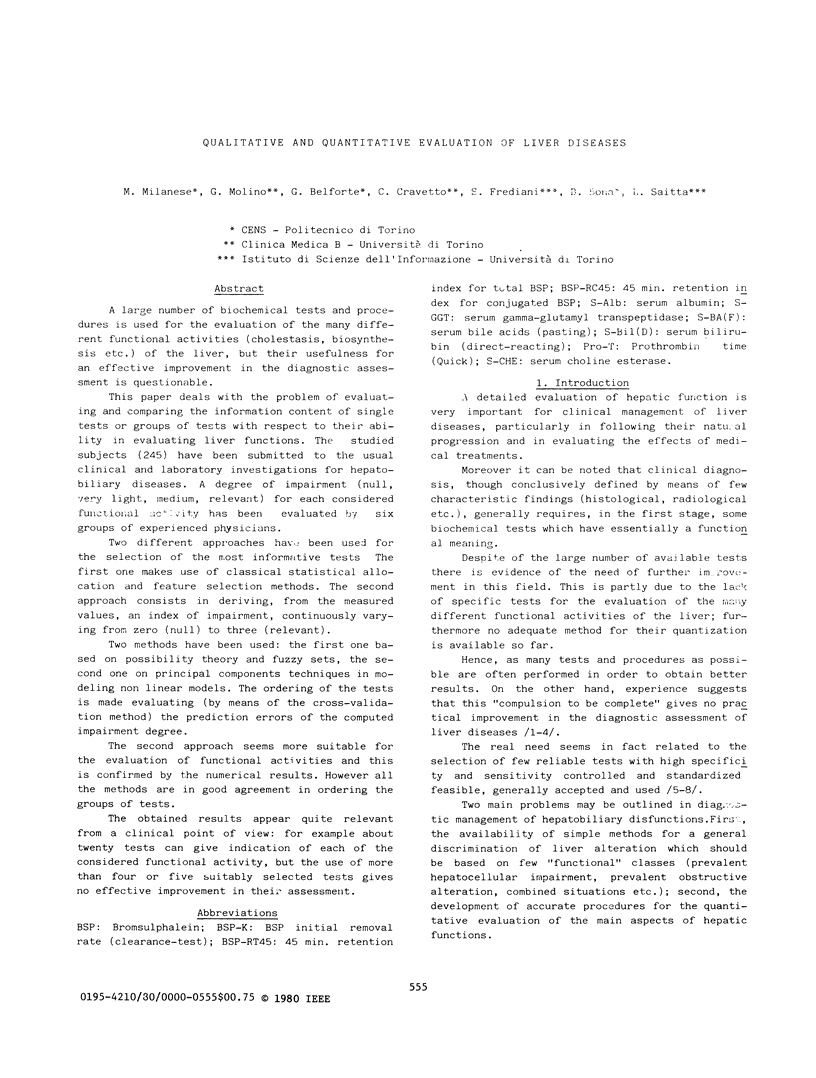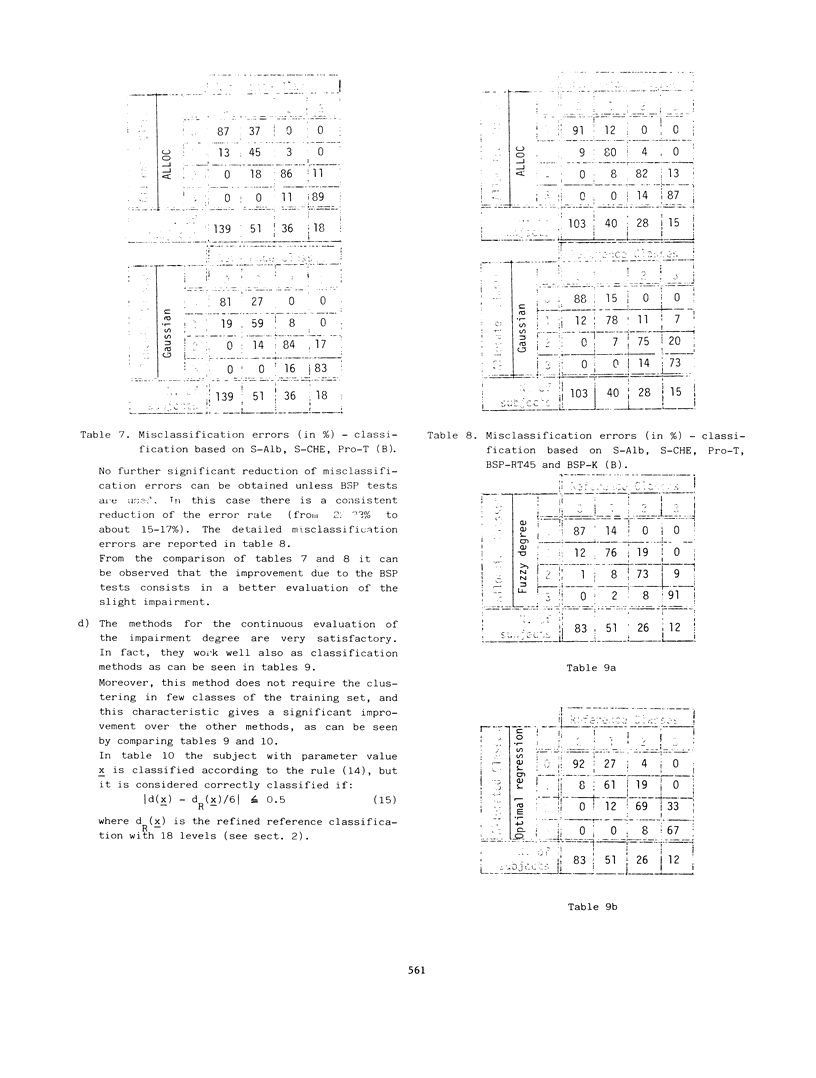Abstract
A large number of biochemical tests and procedures is used for the evaluation of the many different functional activities (cholestasis, biosynthesis etc.) of the liver, but their usefulness for an effective improvement in the diagnostic assessment is questionable.
This paper deals with the problem of evaluating and comparing the information content of single tests or groups of tests with respect to their ability in evaluating liver functions. The studied subjects (245) have been submitted to the usual clinical and laboratory investigations for hepatobiliary diseases. A degree of impairment (null, very light, medium, relevant) for each considered functional activity has been evaluated by six groups of experienced physicians.
Two different approaches have been used for the selection of the most informative tests. The first one makes use of classical statistical allocation and feature selection methods. The second approach consists in deriving, from the measured values, an index of impairment, continuously varying from zero (null) to three (relevant).
Two methods have been used: the first one based on possibility theory and fuzzy sets, the second one on principal components techniques in modeling non linear models. The ordering of the tests is made evaluating (by means of the cross-validation method) the prediction errors of the computed impairment degree.
The second approach seems more suitable for the evaluation of functional activities and this is confirmed by the numerical results. However all the methods are in good agreement in ordering the groups of tests.
The obtained results appear quite relevant from a clinical point of view: for example about twenty tests can give indication of each of the considered functional activity, but the use of more than four or five suitably selected tests gives no effective improvement in their assessment.
Full text
PDF








Selected References
These references are in PubMed. This may not be the complete list of references from this article.
- Hardison J. E. Sounding boards. To be complete. N Engl J Med. 1979 Jan 25;300(4):193–194. doi: 10.1056/NEJM197901253000410. [DOI] [PubMed] [Google Scholar]
- Kassirer J. P., Pauker S. G. Should diagnostic testing be regulated? N Engl J Med. 1978 Oct 26;299(17):947–949. doi: 10.1056/NEJM197810262991710. [DOI] [PubMed] [Google Scholar]
- Lester E. The machines are taking over. Lancet. 1979 Nov 3;2(8149):949–950. [PubMed] [Google Scholar]
- Martin S. P. The clinical laboratory: cost benefit and effectiveness. Ann Intern Med. 1971 Aug;75(2):309–310. doi: 10.7326/0003-4819-75-2-309. [DOI] [PubMed] [Google Scholar]
- Ransohoff D. F., Feinstein A. R. Problems of spectrum and bias in evaluating the efficacy of diagnostic tests. N Engl J Med. 1978 Oct 26;299(17):926–930. doi: 10.1056/NEJM197810262991705. [DOI] [PubMed] [Google Scholar]
- Wagner G., Tautu P., Wolber U. Problems of medical diagnosis--a bibliography. Methods Inf Med. 1978 Jan;17(1):55–74. [PubMed] [Google Scholar]


